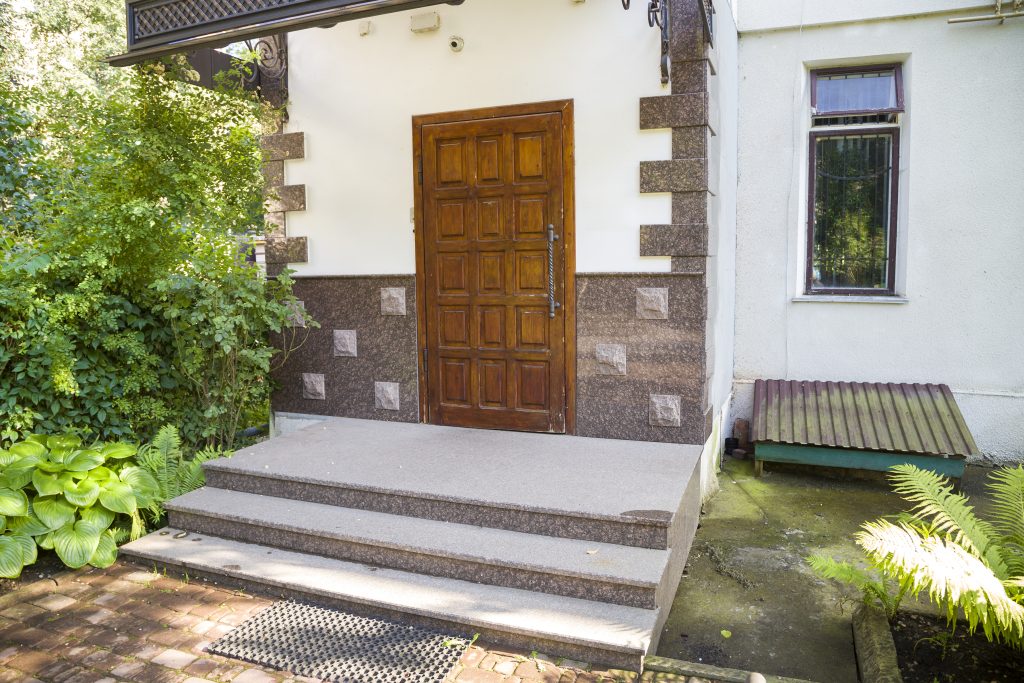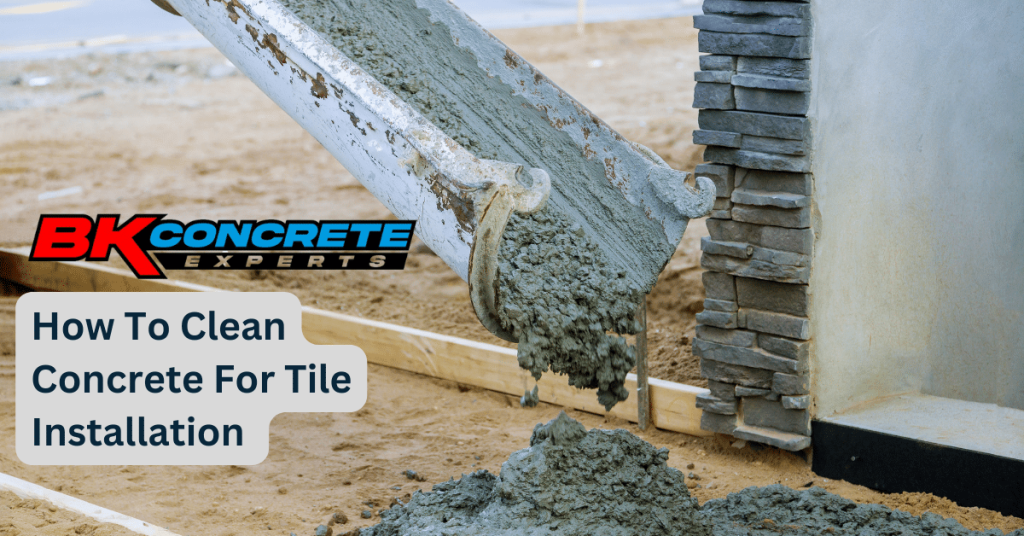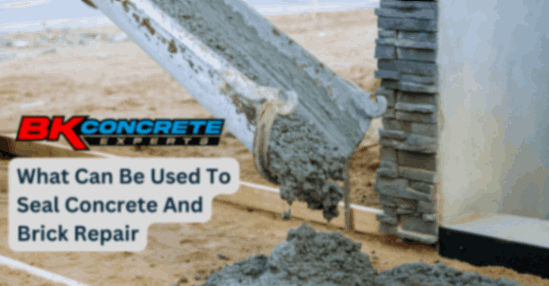Concrete is a robust and widely used building material, valued for its strength and durability. It’s the backbone of modern construction, used in a variety of structures such as buildings, bridges, roads, and driveways. However, like all materials, concrete is subject to wear and tear, and one common issue that arises is concrete pitting. Pitting refers to the formation of small, crater-like holes on the surface of the concrete. These blemishes are not only unsightly but can also be indicative of underlying problems that may compromise the integrity of the concrete over time.

The causes of concrete pitting are diverse, ranging from the natural aging process to environmental factors and chemical reactions. Improper mixing during the concrete pour, inadequate curing, or exposure to harsh weather conditions can all lead to pitting’s characteristic depressions. Moreover, the presence of salts, such as those used for de-icing roads, can induce a chemical reaction known as spalling, which exacerbates the pitting effect. Recognizing these signs early is crucial for maintaining the functionality and appearance of concrete installations.
Addressing concrete pitting promptly is essential to prevent further damage and extend the lifespan of the concrete surface. Professionals in the field can assess the extent of the problem and propose solutions tailored to the specific case, from resurfacing to sealants, ensuring the concrete remains safe and visually appealing. Understanding and mitigating the root causes of pitting can reduce future incidents, helping to maintain the structural soundness and aesthetic quality of concrete surfaces for years to come.
Causes of Concrete Pitting

Concrete pitting is a type of deterioration that compromises not only the aesthetics of a surface but also its structural integrity. This section delves into the specific reasons behind the occurrence of pitting in concrete.
Freeze-Thaw Cycles
The freeze-thaw cycle is one of the primary causes of pitting in concrete. When water penetrates the porous surface of concrete and freezes, it expands, leading to fractures and pits. Regular exposure to these cycles, where the water freezes and then thaws, repeatedly stresses the concrete and may result in pitting.
Chemical Reactions
Concrete pitting can also occur due to chemical reactions. The use of salt, commonly employed to melt ice on concrete surfaces, can lead to a chemical reaction that deteriorates the concrete. This is particularly evident in the form of pitting and spalling, where salt acts as an aggressive agent, accelerating the damage.
Physical Impact
Lastly, physical impact from heavy machinery or tools can lead to surface abrasions and eventual pitting. External forces exceeding the concrete’s designed load capacities can produce immediate or gradual deterioration, eventually manifesting as pitted areas on the concrete’s surface.
Identifying Concrete Damage

When inspecting concrete for damage, one should look for visible signs of deterioration and assess the material’s structural integrity. This process is crucial in maintaining safety and longevity of concrete structures.
Signs of Deterioration
Identifying the early signs of concrete damage can often prevent more significant issues. Look for a rough texture and the presence of small, pock-like craters on the surface, which indicate concrete pitting. These imperfections may suggest more extensive internal damage and should not be ignored. Companies offering a free inspection typically examine such surface irregularities to evaluate the concrete’s condition.
- Rough Surface: Indicates the initial stages of surface breakdown.
- Craters or Pitting: Small, hollowed-out areas signify deeper concrete material degradation.
Assessing Structural Integrity
Evaluating the structural integrity of concrete involves more than a superficial examination. One should check for cracks that may compromise the structure’s ability to bear loads. Ensuring the stability of the concrete is essential for safety and functionality. Professionals use various tools and techniques to assess these aspects thoroughly.
- Crack Width and Depth: Measurement aids in determining the extent of the damage.
- Load-Bearing Capacity: Ensures the structure remains safe and functional.
Preventative Measures and Maintenance

Preventative maintenance is crucial for prolonging the lifespan of concrete and avoiding problems such as pitting. A strategic approach to preventative care can mitigate the effects of weather and wear.
Proper Concrete Mixing
The foundation of durable concrete lies in proper concrete mixing. An accurate proportion of water, aggregates, and cement ensures the mix sets correctly. The right mix reduces the risk of pitting and other surface defects that can lead to premature deterioration.
Sealing and Protective Coatings
Applying sealant is a proactive step to protect concrete from moisture, salt, and staining. High-quality sealers provide a barrier against rain and other elements, reducing the permeability of the concrete and preventing damage. Regular reapplication of the sealant, according to manufacturer recommendations, maintains this protective layer.
Winter Care
During winter, concrete requires special attention. The use of salt for de-icing can cause surface damage and accelerate pitting. Opting for alternative de-icing chemicals that are less harsh can prevent such issues. Additionally, promptly removing snow and avoiding the use of metal shovels can minimize surface scratching that leads to pitting.
Repair Solutions for Pitted Concrete

Repairing pitted concrete is essential for maintaining the integrity and appearance of concrete surfaces. The following solutions offer various methods tailored to different extents of damage, from surface-level degradation to deeper pits.
Epoxy and Resurfacing Options
Epoxy-based fillers are a popular choice for addressing smaller pits in concrete. They provide a strong bond that adheres well to the existing concrete, creating a smooth finish upon curing. For more extensive surface damage, concrete resurfacing is a method that applies a new layer to the existing concrete, renewing the entire surface. Resurfacing options often incorporate special blends that enhance durability and longevity.
- Epoxy-Based Fillers: These are used for smaller, shallow pits.
- Clean the area thoroughly before application.
- Apply according to the manufacturer’s instructions for best results.
- Concrete Resurfacing:
- Involves applying a new layer of concrete or overlay product.
- Can significantly improve surface appearance and function.
Traditional Patching Techniques
For deeper pits, traditional patching techniques that use concrete patching compounds are effective. These compounds are specifically formulated to fill in the voids and can be smoothed to match the surrounding surface. It is critical to remove any loose material from the pit and properly prepare the surface to ensure a lasting repair.
- Preparing the Surface:
- Remove all loose and damaged concrete.
- Clean the pit thoroughly to improve the adhesion of the patching compound.
- Applying the Patching Compound:
- Choose a compound suitable for the size and depth of the pits.
- Compact the compound into the pit and smooth it to blend with the existing surface.
New Innovations in Concrete Repair
Advancements in repair materials and techniques offer enhanced solutions for pitted concrete. Concrete lifting, employing polyurethane foam injection, raises and stabilizes the concrete without removal. Revolutionary patching materials have been developed with increased strength and reduced cure time.
- Concrete Lifting with Polyurethane Foam:
- Targets uneven concrete slabs.
- Provides a non-invasive solution to lifting and stabilizing the surface.
- Advanced Repair Materials:
- Offer faster cure times and superior performance.
- Some may contain polymers or additives that improve adherence and durability.
Improving Curb Appeal and Longevity
Maintaining the condition of concrete surfaces such as driveways, pool decks, and patios not only enhances a property’s curb appeal but also contributes to its longevity. Addressing the aesthetic and structural concerns can prevent further damage and prolong the lifespan of the concrete.
Addressing Esthetic Concerns
Concrete Staining: One can significantly improve the appearance of concrete surfaces by addressing concrete staining. Applying a fresh stain can rejuvenate a faded concrete driveway, thus boosting the property’s curb appeal.
Resurfacing: For concrete surfaces like pool decks and patios showing signs of pitting or flaking, resurfacing offers a cosmetic and functional uplift. This process can hide surface imperfections and provide a new, customizable look.
Ensuring Lasting Results
Sealing: To ensure lasting results, it’s key to seal concrete after addressing aesthetic concerns. Sealing protects against moisture ingress – a primary cause of damage from freeze-thaw cycles as noted on Bob Vila’s site. A sealed concrete surface can resist weather-related deterioration.
Regular Maintenance: Scheduling regular maintenance checks for concrete surfaces is essential. It identifies minor issues before they become major concerns, extending the life of patios, driveways, and pool decks while preserving their appearance.
Contact and Compliance Information
When seeking to address concrete pitting, it is essential that one consult with professional services that understand local building codes. These entities often have contact information readily available for consultations and service inquiries.
Professional Services
To ensure proper repair of concrete pitting, individuals should reach out to professional services specializing in concrete remediation. These services offer expert evaluations and typically provide:
- Free Inspections: In-person assessments to determine the extent of concrete damage.
- Detailed Quotations: Itemized costs associated with the repair process.
The “Contact Us” page of their websites usually provides phone numbers, email addresses, and sometimes a contact form, facilitating easy communication with the professional service providers.
Adhering to Local Codes
Professionals must repair concrete surfaces while strictly adhering to local building codes to ensure both safety and compliance. These regulations vary by locality but generally include:
- Material Standards: Requirements on concrete mix and repair materials.
- Workmanship: Standards for the proper installation and curing process.
Building codes are available on local government websites or through contact with local building code enforcement offices. Compliance not only prevents future issues but also ensures the longevity and safety of the repair work.

 CALL US NOW
CALL US NOW



